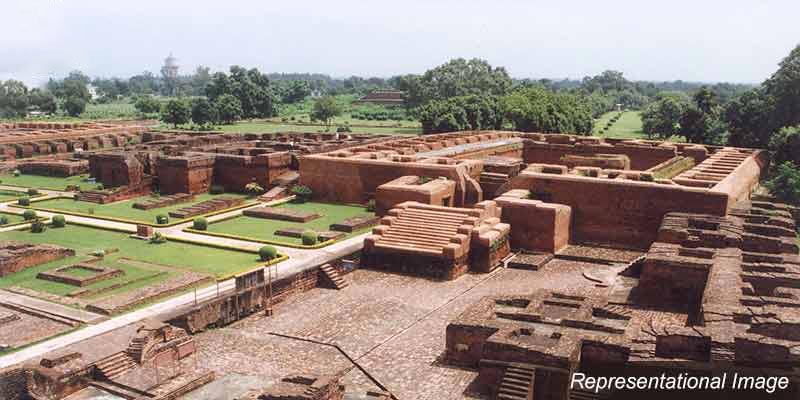- India
- Nov 25
Govt mulls amendment to AMASR Act
• Union Culture Minister Gajendra Singh Shekhawat said the ministry is considering if any further amendment is needed in the AMASR Act.
• He was delivering the inaugural address at the 14th Foundation Day function of the National Monuments Authority (NMA), a statutory body under the Ministry of Culture.
• The sites under the Archaeological Survey of India (ASI) are maintained under the ambit of the AMSAR (Ancient Monuments and Archaeological Sites and Remains) Act.
• At present, 3,697 monuments are under the ASI.
Archaeological Survey of India
• The Archaeological Survey of India (ASI), established in the year 1871, is the premier organisation for the archaeological research and protection of the cultural heritage of the country.
• The ASI, under the Ministry of Culture, regulates various archaeological activities and research in the country.
• The maintenance of ancient monuments and archaeological sites and remains of national importance is one of the prime concerns of the ASI.
• At present, it protects and maintains 3,697 ancient monuments and archaeological sites and remains of national importance through 38 Circles (including 1 mini circle at Leh), functioning under six regional directorates located at Delhi, Kolkata, Mumbai, Bengaluru, Guwahati, and Bhopal.
• It regulates two central Acts — the Ancient Monuments and Archaeological Sites and Remains Act (AMASR), 1958, and Antiquities and Art Treasures Act, 1972.
What is AMASR Act?
• The Parliament had enacted the Ancient Monuments and Archaeological Sites and Remains Act, 1958 on August 28, 1958 to provide for the preservation of ancient and historical monuments and archaeological sites and remains of national importance, for the regulation of archaeological excavations and for the protection of sculptures, carvings and other like objects.
• It was enacted after repealing the Ancient and Historical Monuments and Archaeological Sites and Remains (Declaration of States Reorganisation) Act, 1951 and section 126 of the State Reorganisation Act, 1956.
• Notifying any monument as of national importance or de-notification is taken up by the government as per provisions of the AMASR Act.
• Under section 20A of the AMASR Act, an area extending to a distance of 100 meters in all directions from the protected area and protected monument is prohibited area for any construction.
• Beyond this, 200 meters area has been declared as Regulated Area for the said purposes. Repair/renovation of the existing structures in prohibited areas and new constructions in regulated areas are permissible on obtaining permission from National Monument Authority/ Competent Authority meant for such purpose.
• Subsequently, the Parliament passed an Act to further amend the AMASR Act on March 29, 2010 to set up a National Monuments Authority for protection and preservation of monuments and sites through management of prohibited and regulated area around the centrally protected monuments.
• Several functions have been assigned to the NMA for the protection and preservation of monuments and sites through management of the prohibited and regulated area around the centrally protected monuments.
• One amongst these responsibilities of NMA is also to consider grant of permissions to applicants for construction related activity in the prohibited and regulated area.
• With increase of urbanisation, development, growth and increasing population pressure, there is growing pressure on land, including the land around centrally protected monuments. As this often affects the monument/site adversely, it is important that such growth around the centrally protected monuments is properly regulated, balancing the needs of individuals and growth and development on the one hand and the requirements of preservation and protection of these monuments on the other.
• NMA has been mandated to frame monuments specific heritage bye-laws to regulate construction activities around the centrally protected monuments.
• It has also been given the responsibility of classification and gradation of monuments in consultation with the Archaeological Survey of India.
Manorama Yearbook app is now available on Google Play Store and iOS App Store

